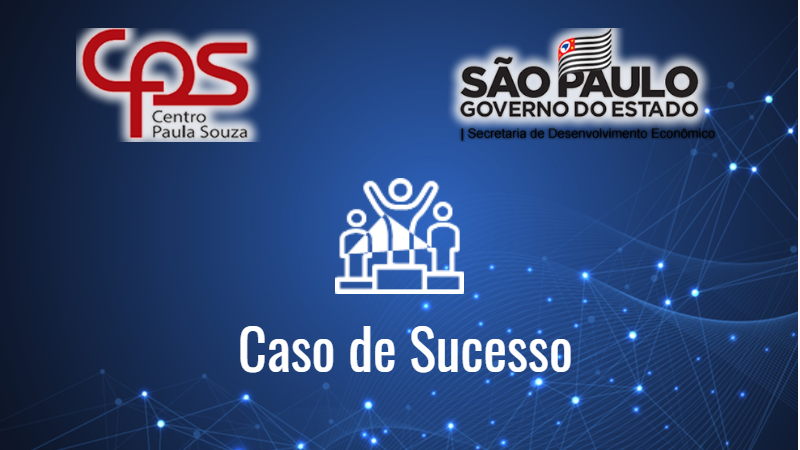Centro Paula Souza – How Covid 19 speeded up digital transformation in the largest public technical school in Latin America
In view of the social isolation required to protect the population from Covid 19, the Paula Souza Center, a reference public institution in technical education in Brazil, could not simply suspend classes for its 350,000 High School and University-level students. The solution found combined resources from Office 365, such as the Microsoft Teams, and Azure’s cognitive services (AI) to guarantee the perfect functioning of the 296 units of the Paula Souza Center (CPS) and the maintenance of all the classes and subjects, with an adhesion of more than 75% of the students by the fourth day of operation of a new educational reality, when this text was written.
The Institution
A reference in technical education
The Paula Souza Center (CPS) is largest public technical school in Latin America, linked to the Department of Economic Development of the State of São Paulo – the state with the most important economy in the country. It offers public education of recognized quality at the High School and University level. It is to be found in 322 São Paulo municipalities, operating 223 Technical Schools (Etecs) and 73 Technology Faculties (Fatecs), with a total student population of 350,000 of an excellent level, as places in the Etecs and Fatecs are disputed by students of all social classes.
The Etecs concentrate more than two thirds of the CPS students, enrolled in 185 different courses directed at a wide variety of sectors, while the Fatecs offer 80 undergraduate technology courses, such as Civil Construction, Mechanical Engineering and Information Technology. In addition, the CPS offers postgraduate, technology-updating and extension courses.
The challenge
A project to be carried out in record time to cater for an enormous volume of users remotely and with security, implying the digital transformation of education in the CPS.
The ultimate great challenge faced by the Paula Souza Center is connected to the need for social isolation adopted officially by the State of São Paulo as a result of the Covid19 pandemic. With classes suspended in public education institutions throughout the state, how to maintain pedagogic activities for hundreds of thousands of students, geographically dispersed all over the state, respecting the academic year? Furthermore, a second component of this challenge was the administrative question, now to be carried out remotely by collaborators in the whole state.
The solution
Suíte Office 365, Microsoft Teams, cognitive services (AI) and Azure’s Windows Virtual desktop ensured the continuity of classes and administrative services in times of a pandemic.
Combining Office 365, already implemented since 2014, with the Teams collaboration tool, which the Paula Souza Center had access to three years ago, Ruben Pimenta, the Director of Technology, managed successfully to face the challenge of connecting 350,000 students and 22,000 teachers to reinitiate classes interrupted in mid-February already at the beginning of May. Pimenta turned to Microsoft which recommended ITCore, a partner with wide experience already in the education sector.
“And then we started to develop the project of how to classroom – what I call to classroom is to put in a classroom – the teachers of each subject, in each unit, with their respective students, in all the Etecs and Fatecs. This project had little time to be elaborated and we managed to do it in a time that I consider to be amazing: 110,000 teams (virtual classrooms), to meet the needs of students and teachers, in less than a month,” says Pimenta.
The project did not stop there. With the support of Microsoft and ITCore, a robot (virtual assistant) was developed, in one week, by means of Azure’s cognitive services (Artificial Intelligence), automating replies to the questions of the whole community related to the new reality.
And while this platform is being implemented, the development of a mobile app gets underway to serve students that lack data plans. According to Pimenta, the CPS will be responsible for the data consumption cost of these students, allowing everyone to be able to connect themselves without any problem to the classes.
Utilizing Azure already as a cloud solution for the administrative service, the CPS incorporated in only two days the Windows Virtual Desktop to create an environment able to serve around 450 machines, allowing all the administrative servers to execute remotely their activities.
Plans for the near future include a refinement of security, particularly in view of the LGPD (General Data Protection Law) which is scheduled to come into force in Brazil in 2021, and which will have implications, says the Director, “in the way the student uses the tool: which is something that he shares, what he can and cannot do, if he can share internally, if the teacher can share things of the institution outside the institution, and so on.”
Benefits
Adhesion of 75% of the students shows a path with no return
The students and teachers have totally accepted the idea of remote classes. One only has to look at the adhesion of more than 75% of the students, verified in only four days, from Monday, May 4th, when the new model was initiated, until Friday, the 8th. Pimenta views these numbers as “an absolute success.”
“It is a very big change. I consider this to be a digital transformation in education, and Paula Souza is one of the pioneers in this change. At this moment where we are, as they like to say in the IT market, the plane has taken off. Now with an improvement in processes, security, availability…with the help of ITCore, I am sure that we will continue to pursue an innovative project,” says Pimenta.
Summing up, he makes it clear that “this project has revealed a digital transformation in education that is very strong – and which, in my understanding, has no return.”

